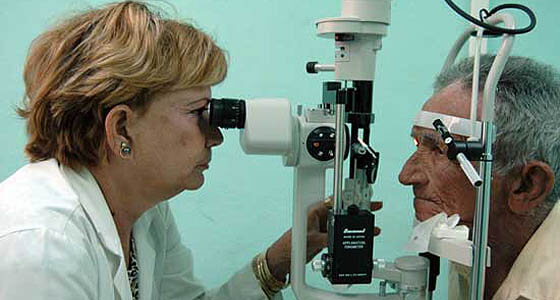Retinitis pigmentosa treatment using stem cells
 It is a disorder that was discovered in 1857 by doctor Donders. In fact, this is a group of conditions that are clinically distinctive and are united with one common feature – dystrophy of retina photoreceptors or their damage. The group includes progressive degenerations that differ from each other, in some cases the variation is big.
It is a disorder that was discovered in 1857 by doctor Donders. In fact, this is a group of conditions that are clinically distinctive and are united with one common feature – dystrophy of retina photoreceptors or their damage. The group includes progressive degenerations that differ from each other, in some cases the variation is big.
Who is affected by Retinitis pigmentosa?
It is a hereditary disease. It begins as a rule with one eye but with time the second eye also becomes affected. There are exclusions though and some cases are sporadic.
The retinosis pigmentosa is diagnosed as a rule when the patient is a teenager. When the disease is diagnosed later then the cases of this type are much milder.
Progression of the pigmented retinitis
The function of light receptors, which are also called rods and cones, are more and more deteriorated with time. As a result, only the central vision is retained, while the peripheral vision narrows gradually.
The symptoms of it are the following:
- It starts as rod degeneration when the person notices that it is hard for him to see in the darkness.
- Then it becomes hard for patient to see with periphery vision.
- Tunnel vision.
- Night blindness.
The symptoms can bring to total blindness. The age when that happens can range from childhood years to the late 40-s.
It is possible to diagnose the condition with visual field testing.
Another method of testing pigmented retinitis is electroretinogram (ERG). The diagnosis is usually based on these two tests.
Retinosis pigmentosa brings to a number of complications.
Cataracts occur in RP patients with bigger frequency. Cataract removal is done by means of surgery operations.
Treatment of Retinitis pigmentosa
There is no cure for Retinitis pigmentosa. There are just some things that are recommended in order to enhance the condition of RP patients. For instance, vitamin A therapy can be ascribed to such measures. A and E vitamins are able to slow the progression of disease, though the results of the study are absolutely different.
Another experiment showed that omega-3-rich diet is able to slow the progression of disease. The patient need to take oily fish for it such as tuna, salmon, mackerel, herring, sardines. Some researchers assert that omega-3-rich-diet in combination with vitamin C is able to provide about 20 years of useful vision if the patients start sticking to the diet in their 30-s. B
But stem cell therapy showed the most effective results. The diseased cells of retina are replaced with embryonic stem cells. After this procedure the sight is restored without complications.